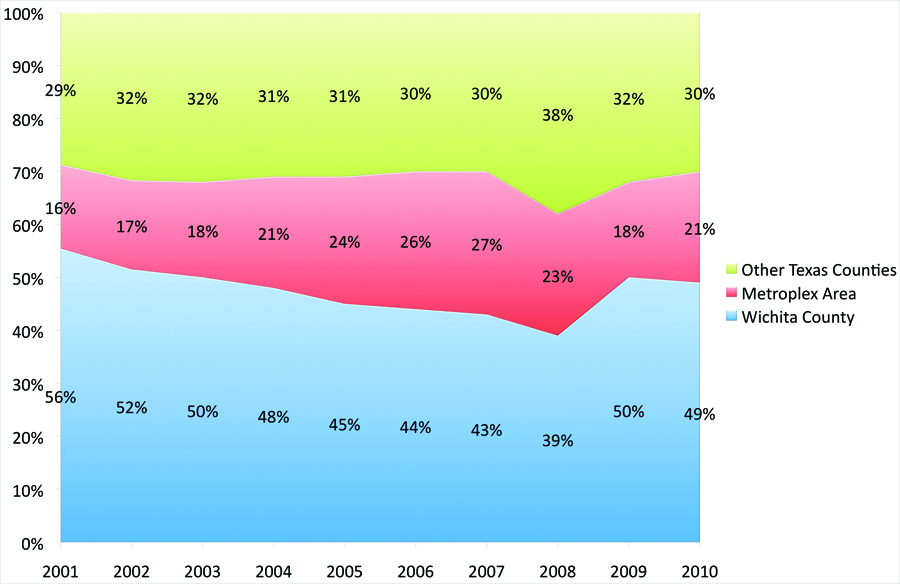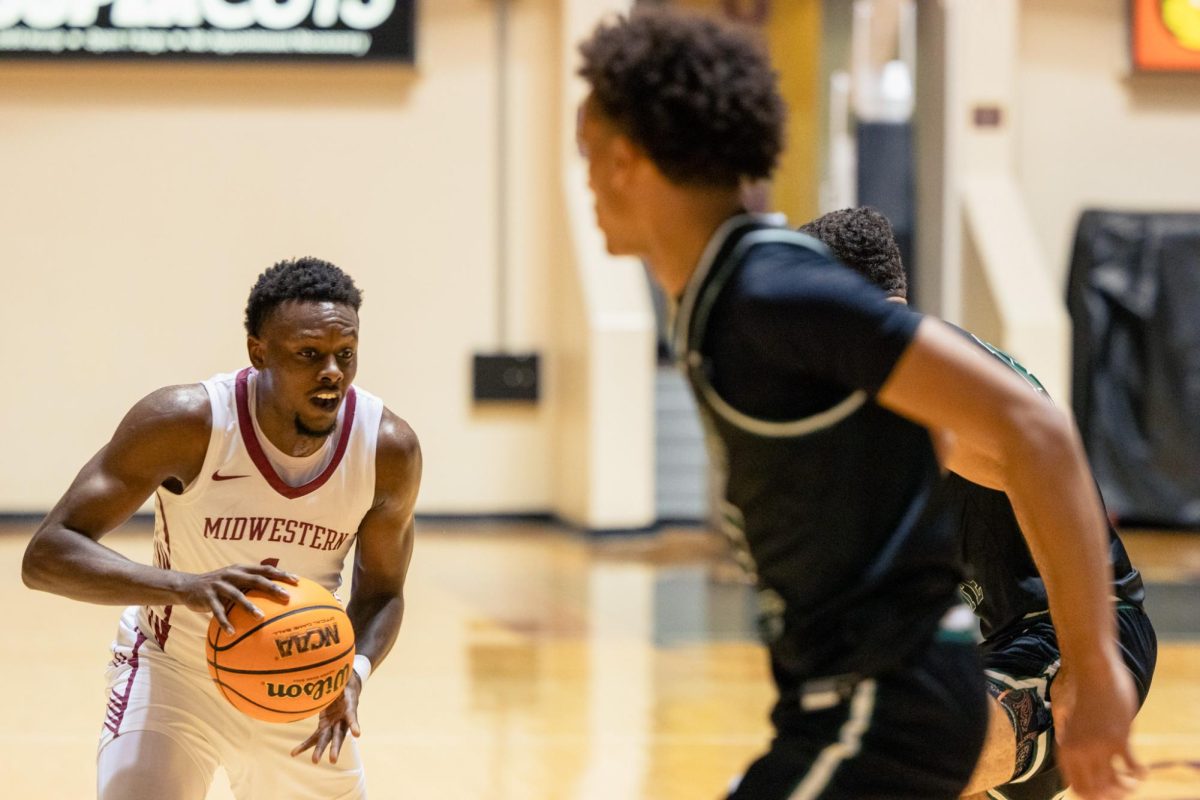
*These numbers reflect the enrollment statistics of students who live in Texas. The numbers for 2011 were not included in the graph because they were calculated using the figures for out-of state and foreign students, among others. According to documents obtained from the MSU admissions office, the percentage of metroplex students enrolled at MSU rose by 2 percent. The overall number of them, however, dropped.
By Donace Wilkinson
One in every five MSU students lives in the metroplex. And until 2008, that number had been rising dramatically.
The metroplex, which is comprised of Dallas, Ft. Worth, Addison, Lewisville and surrounding cities, claims the second most MSU students of any geographic area. Wichita County, where MSU is located, claims the most.
Data collected by MSU Institutional Research and Planning shows that students from the metroplex accounted for 27 percent of the MSU student population in the 2007-2008 academic year.
“That’s a pretty large number,” said Julie Gaynor, MSU director of public information and marketing. “That’s the next largest group outside of local Wichitans.”
MSU President Dr. Jesse Rogers said during the 1960s, roughly 80 percent of MSU students came from the immediate area. Now only half come from here.
“The numbers for the metroplex go up, up, up, and the numbers for the area go down, down, down,” he said.
That was true until 2008, when the percentage of students from the DFW area dropped from 27 percent to 23 percent. It dropped again in the 2009 year to 18 percent.
“I thought, “This is an indication that something has changed,’” Rogers said. “This told me that more students are staying home and not going to school.”
Percentages of metroplex students had risen steadily from 16 percent in 2001 to 27 percent in 2007, but dropped by 4 percent in 2008. Those numbers increased to 21 percent in 2010. But the 2011 numbers—the most recent data—show another drop to 19 percent.
Barbara Merkle, MSU director of admissions, said her department is trying to find out where the students they recruited went.
Historically, MSU has found success in recruiting students from the DFW area.
Dr. Keith Lamb, vice president of student affairs and enrollment management, said marketing to the metroplex is very effective and necessary.
“Midwestern used to be a commuter school. Most people lived off campus. Most people were local.” He said the high school population has been decreasing so there is less of a traditional-age market in Wichita Falls.
MSU President Dr. Jesse Rogers said the demographics of Wichita Falls are shifting rapidly.
“Wichita Falls is an aging community. Look at the metroplex – there’s just a sea of homes out on the north and west sides. Now we’re seeing way more students from Colleyville and Grapevine. We’re just far enough away to go away to school,” he said.
Lamb said Midwestern made a decision to market to the metroplex to maintain their enrollment.
“What they found is it can grow the enrollment,” he said. The result was the need for a big increase in housing facilities for students.
“Over the last 10 years, we doubled our housing from 715 to 1400,” he said.
Lamb said geography plays a major role in students choosing MSU.
“One of the growth corridors of the metroplex is the northwest. The metroplex is much more accessible now than before,” he said. “Midwestern is within a reasonable traveling distance where (students) can be away from home and get the full college experience.”
“We actively recruit in the metroplex because (MSU) is far enough to have the students gain some independence, but close enough that if they have to get home quickly, they can do that,” Merkle said.
Gaynor likes to say, “MSU is close enough to take your laundry home.” She said the public information and marketing department uses a wide variety of media to promote MSU in the metroplex.
“Newspapers are not as effective as they used to be, but we still (use them) to target parents and grandparents who say to their kids: ‘Have you thought about MSU?’”
Gaynor said one particular medium always gets prospective students’ attention.
“In the metroplex, billboards are our number one media and most students want to be on the billboards,” she said.
The billboards help to bring prospective students to MSU because they recognize the faces they see in the promotions.
Merkle said MSU recruits students from high schools in Mesquite, Arlington, Fort Worth and Lake Worth.
“Years past, we have targeted specific high schools, our feeder schools—Keller, Flower Mound, Marcus, Southlake Carroll,” Gaynor said.
Merkle said when parents cannot attend the college fairs, MSU activities also help to sell the university as the school of choice.
“The Mustangs Rally helps parents decide whether they want their children to come to MSU.” She said visitors to MSU usually fall in love with the campus.
“People have a perception of Wichita Falls. Luckily, we’re in the country club area so the campus is so beautiful. Once parents can visit the campus, they want their children to apply,” she said.
MSU administrators say the price of an education at MSU is also pretty attractive.
“Midwestern is a mid-size university with small classes at a reasonable cost,” Lamb said. “When you compare Midwestern to other schools in the region, what you get for the dollar, you can’t beat that for a full college experience. Midwestern is in a unique position as a public liberal arts institution.”
Gaynor said three words describe why MSU draws so much attention from the metroplex, “Location, beauty, affordability: you get an excellent education at an affordable price.”
















